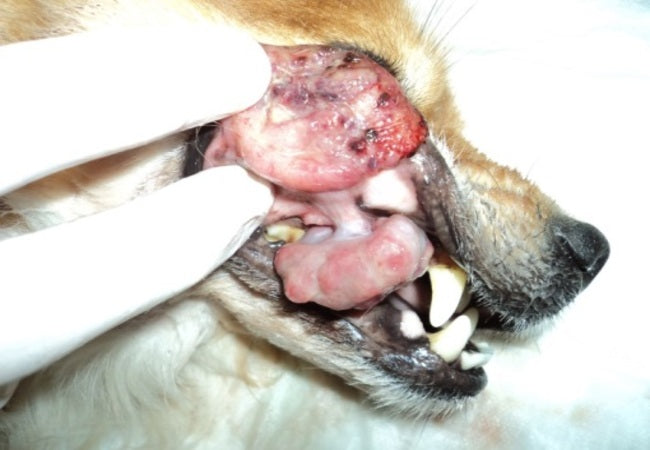Vet’s 2025 Guide to Canine Digital & Skin Melanocytic Tumors 🩺 Diagnosis, Treatment & Prognosis

In this article
Vet’s 2025 Guide to Canine Digital & Skin Melanocytic Tumors 🩺 Diagnosis, Treatment & Prognosis
By Dr. Duncan Houston BVSc
💡 What Are Melanocytic Tumors?
Melanocytic tumors in dogs arise from melanocytes—cells producing pigment in skin, digits, mouth, and eyes. They range from benign melanocytomas to aggressive malignant melanomas, especially on toes and mucocutaneous junctions.
🚩 Who’s Affected & Risk Factors
- Older dogs (often >10 years), though canines of any age can be affected.
- Males show an increased risk compared to females.
- Breeds at higher risk: Scottish Terriers, Boston Terriers, Airedales, Cocker Spaniels, Boxers, Dobermans, Schnauzers, Terriers, Golden Retrievers, Vizslas.
- Digit (toe) melanomas are common in pigmented dogs and often involve underlying bone.
- Cutaneous melanocytomas appear often on the head, limbs, scrotum—usually benign with wide excision.
👀 How They Appear & Signs
- Skin tumors: pigmented (black/brown) or rarely amelanotic nodules.
- On toes: swelling, nail destruction, pain, lameness, possible bone lysis.
- Enlarged local lymph nodes or respiratory signs may indicate metastasis.
🧪 Diagnostic Steps
- Fine‑needle aspirate (FNA) to detect pigmented melanocytes—accurate for pigmented tumors, less so for amelanotic ones.
- Incisional or excisional biopsy + histopathology: mandatory for prognosis (nuclear atypia, mitotic index, invasion).
- Immunohistochemistry (e.g., Melan‑A, PNL‑2) and Ki‑67 needed for amelanotic or mixed tumors for definitive diagnosis.
- Radiographs of digits and chest X‑rays/abdominal US for bone involvement and metastasis.
- Lymph node aspiration is recommended for staging.
🛠 Treatment Strategies
1. Surgical Removal
- Wide surgical excision is curative for benign melanocytomas and some low-grade malignant tumors.
- Digit tumors typically treated by toe amputation; may require additional bone resection.
- Biopsy margins should be evaluated; re‐excise or add radiation if margins are incomplete.
2. Adjunct Therapies
- Radiation therapy useful post-marginal excision or for unresectable tumors.
- Human–tyrosinase DNA vaccine (ONCEPT) for high-risk melanomas (digital/oral); enhances immune response.
- Chemotherapy (e.g., carboplatin) has a limited success—response in ~28% of cases.
- Emerging targeted immunotherapies (e.g., c‑Kit inhibitors, proteoglycan-4 antibodies) are under investigation.
3. Staging & Ongoing Care
- Regular imaging (X‑rays/ultrasound) every 3–6 months for 2 years to detect metastasis.
- Monitor lymph nodes, chest/abdominal imaging tailored to primary tumor risk.
📈 Prognosis Outlook
- Melanocytomas: excellent prognosis with complete excision; recurrence is rare.
- Cutaneous melanomas: variable—low-grade tumors can have good outcomes; high-grade tumors have higher metastasis → guarded prognosis.
- Digit melanomas: aggressive; ~30 % have metastases at diagnosis; median survival ~10–12 months after amputation & therapy.
- Oral/mucosal melanomas: live medians vary (stage I: ~511 days; stage III: ~336 days).
- Response to vaccine therapy improves disease-free intervals, especially post-complete excision.
🏡 Ask A Vet App Home‑Support Tools
- 📆 Surgery & therapy reminders: amputation, chemo, vaccine.
- 📊 Track healing: wound photos, swelling, lameness scale, appetite.
- 📸 Upload images: digit healing, mass/regrowth signs, lymph nodes.
- 🔔 Alerts: lameness, cough, weight loss, vaccine due dates.
- 📚 Guides: toe wrapping, activity restriction, when to call your vet.
🔑 Key Takeaways
- Melanocytomas = benign, curable with surgery.
- Malignant melanomas = aggressive; digit tumors are most concerning.
- Diagnosis needs FNA + biopsy/immunohistochemistry.
- Surgery (wide excision/toe amputation) is first-choice treatment.
- Immunotherapy and radiation may enhance survival.
- Frequent monitoring for metastasis is vital in high-grade cases.
- Ask A Vet app empowers you to support your dog’s recovery at home.
🩺 Final Thoughts ❤️
In 2025, early detection and accurate grading of melanocytic tumors allow personalized treatment strategies. Surgical removal remains the gold standard, with adjunctive immunotherapy (ONCEPT), radiation, or chemotherapy enhancing outcomes for high-risk tumors. Regular staging, vigilant home monitoring, and guided care via the Ask A Vet app ensure early intervention if recurrence or metastasis occurs—giving your dog the best chance for quality life beyond diagnosis. 🐾✨
Visit AskAVet.com and download the Ask A Vet app to receive reminders for surgery checkups, therapy logs, symptom tracking, photo-uploads, and direct access to veterinary guidance whenever needed. 📲






